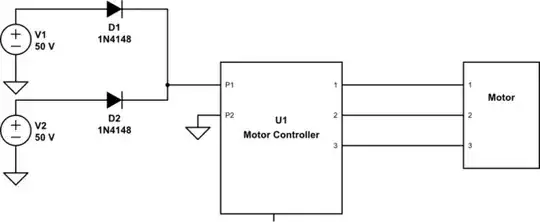I have a system that is powered by 2 batteries that are OR'd together through 2 diodes. They are powering up a speed controller that drives a motor.
Right now, when my motor brakes, I am getting an overvoltage on the input of the speed controller. Normally, my battery will absorb the overvoltage and everything would be great, however, since I started Oring the batteries the path back to batteries is blocked by the diode and I am seeing an overvoltage of 30V on a 50V system so 80V total.

simulate this circuit – Schematic created using CircuitLab
The only thing I can think of is to get a TVS diode and size it correctly to stop any overvoltage, however, the event can happen multiple times at a fast rate. I have not measured it yet, but I suspect that it can happen up to 20Hz. Will a TVS diode be sufficient here? Is there a recovery period for a TVS diode is I guess what I am asking.
The other issue is my system power supplies that are connected on the same node as the motor controller can not handle more than 60V, and I couldn't find a TVS diode that has a working voltage of 50V but a voltage breakdown of anything lower than 60V.